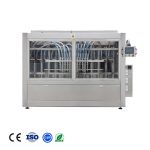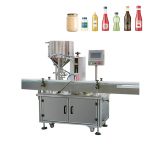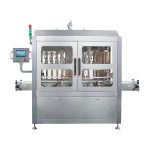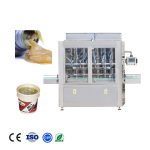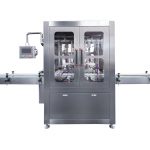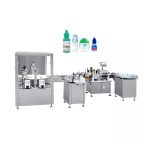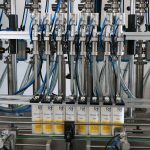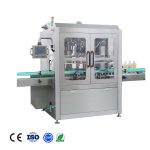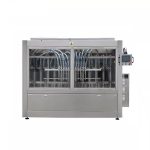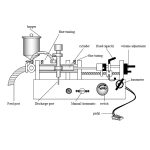A filling and capping machine is a type of automated packaging equipment that is used to fill containers with a product, such as liquids, creams, or powders, and then seal the containers with a cap or closure. These machines are commonly used in the food, beverage, pharmaceutical, and personal care industries, as well as in the chemical and petrochemical industries.
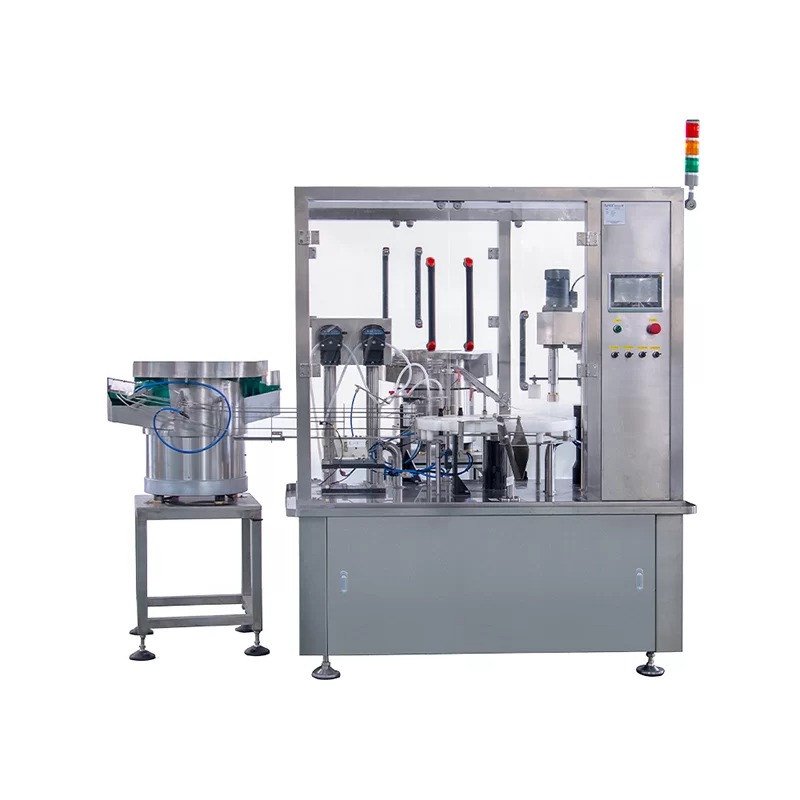
There are many different types of filling and capping machines, each designed to handle specific types of containers and products. Some common types of filling and capping machines include:
- Piston fillers: These machines use a piston to dispense precise amounts of product into the container. They are commonly used for products with low to medium viscosity, such as liquids and creams.
- Gravity fillers: These machines use gravity to dispense product into the container. They are commonly used for products with low viscosity, such as water and juice.
- Volumetric fillers: These machines dispense a specific volume of product into the container using a measuring chamber or a rotating disc. They are commonly used for products with low to medium viscosity, such as liquids and creams.
- Net weight fillers: These machines dispense a specific weight of product into the container using a load cell or other weighing mechanism. They are commonly used for products with high viscosity, such as pastes and gels.
- Vacuum fillers: These machines use a vacuum to draw product into the container. They are commonly used for products with low to medium viscosity, such as liquids and creams.
- Auger fillers: These machines use an auger or screw to dispense product into the container. They are commonly used for products with medium to high viscosity, such as powders and granules.
- Peristaltic fillers: These machines use a flexible tube to dispense product into the container. They are commonly used for products with low to medium viscosity, such as liquids and creams.
Once the product has been dispensed into the container, the filling and capping machine will then seal the container with a cap or closure. Some common types of caps and closures that can be used with these machines include:
- Screw caps: These caps are tightened onto the container by turning them clockwise. They are commonly used for products with low to medium viscosity, such as liquids and creams.
- Snap-on caps: These caps are snapped onto the container by pressing them down until they click into place. They are commonly used for products with low to medium viscosity, such as liquids and creams.
- Crimp caps: These caps are sealed onto the container by crimping the edges of the cap around the neck of the container. They are commonly used for products with low to medium viscosity, such as liquids and creams.
- Flip-top caps: These caps are hinged and can be opened and closed by flipping the top part of the cap. They are commonly used for products with low to medium viscosity, such as liquids and creams.
- Press-on caps: These caps are sealed onto the container by pressing them down onto the neck of the container. They are commonly used for products with low to medium viscosity, such as liquids and creams.
Filling and capping machines can be fully automated or semi-automated, depending on the specific needs of the application. Fully automated machines are able to handle all aspects of the filling and capping process, including container handling, filling, and capping. Semi-automated machines require manual intervention at various stages of the process, such as loading containers or placing caps onto the containers.
Filling and capping machines can be designed for use with a wide range of container sizes and shapes, including bottles, cans, jars, tubes, and pouches. These machines can be configured to handle a variety of filling and capping speeds, depending on the specific needs of the application. Some filling and capping machines are capable of filling and capping hundreds of containers per minute, while others are designed for slower, more precise filling and capping at lower speeds.
In addition to the types of filling and capping machines and caps and closures mentioned above, there are also many other features and options that can be included on these machines to meet the specific needs of the application. Some of these features and options include:
- Automatic container handling: This feature allows the machine to automatically pick up and position containers for filling and capping.
- Automatic cap handling: This feature allows the machine to automatically pick up and place caps onto the containers.
- Cap sorting and orienting: This feature ensures that the caps are properly oriented and positioned for sealing onto the containers.
- Automatic quality control: This feature includes sensors and other technology that can detect defects in the containers or caps, and reject any that do not meet quality standards.
- Automatic labeling: This feature allows the machine to apply labels to the containers as they are being filled and capped.
- Automatic packaging: This feature allows the machine to package the filled and capped containers into boxes or other packaging materials.
Overall, filling and capping machines are an essential piece of equipment in many industries, as they allow companies to efficiently and accurately fill and seal containers with a wide range of products. These machines can be customized with a variety of features and options to meet the specific needs of the application, and can be used to handle a wide range of container sizes and shapes.

